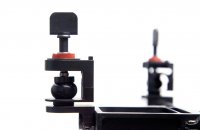danproud
Member
I finally have my S800 EVO after waiting 3 months! Crazy. Anyway, it all looks like good gear. Props seem a bit flimsy but I guess they'll do the trick.
I haven't done any work on it yet, but one thing I've noticed looks really odd. The motors sit on a funny angle from the arms. There are little rubber dampeners below the motors, that are mounted 2 different ways up. I'm not sure if it's done on purpose? the images on their website don't show these rubber dampeners at all. Here's a pic.

Can someone else with a EVO tell me if theirs is the same? Or different?
I haven't done any work on it yet, but one thing I've noticed looks really odd. The motors sit on a funny angle from the arms. There are little rubber dampeners below the motors, that are mounted 2 different ways up. I'm not sure if it's done on purpose? the images on their website don't show these rubber dampeners at all. Here's a pic.

Can someone else with a EVO tell me if theirs is the same? Or different?

